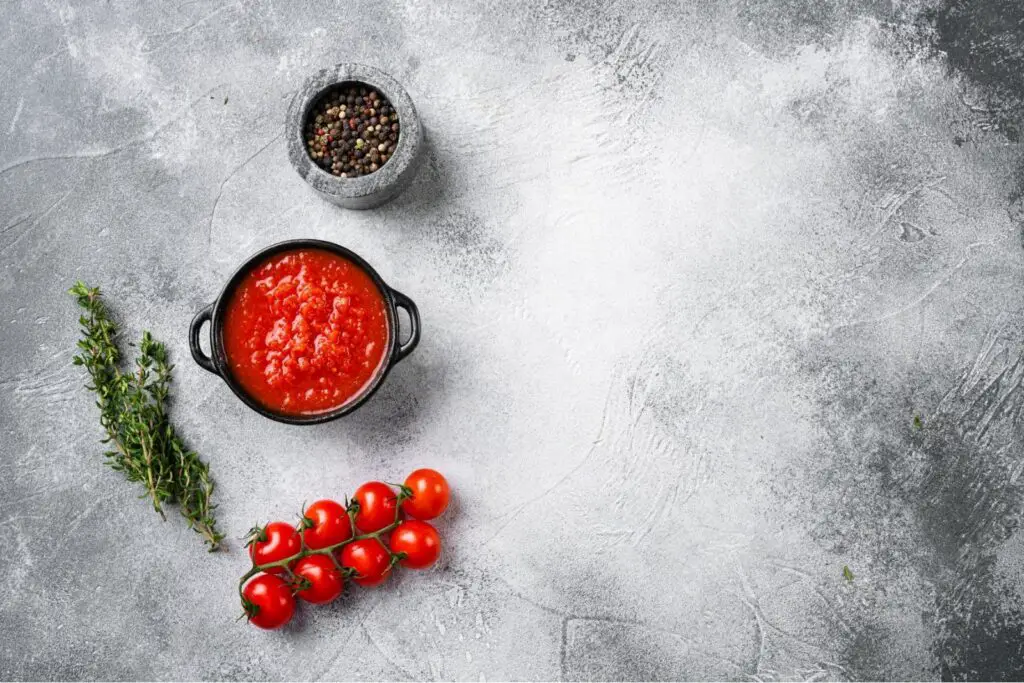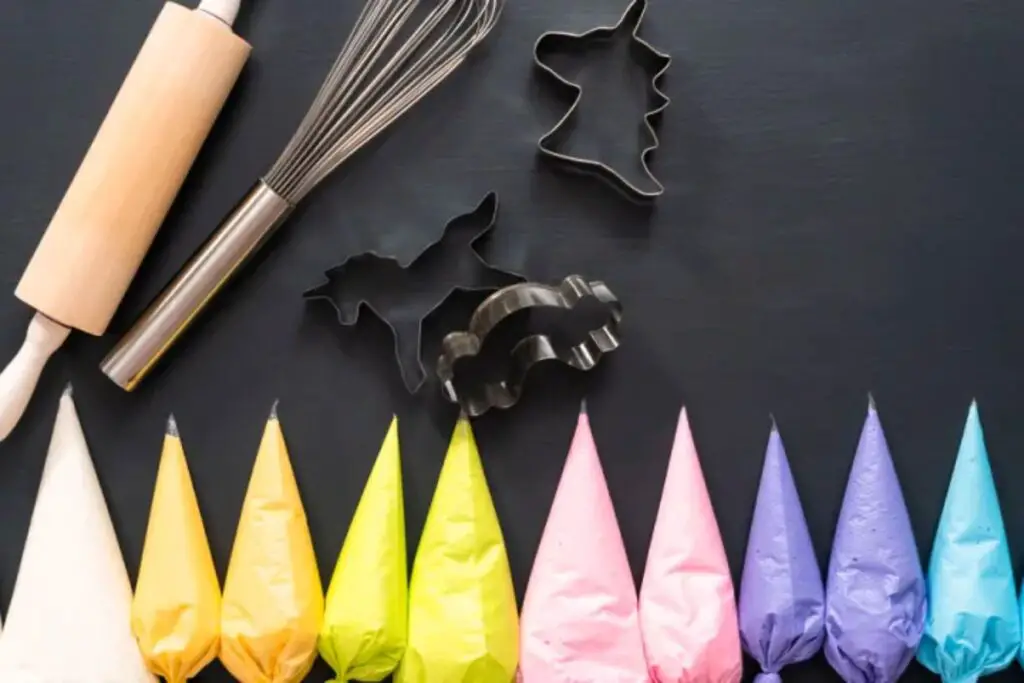
Lemon bars, with their tangy-sweet filling and buttery shortbread crust, are a beloved and refreshing dessert that captures the essence of citrusy goodness. These delectable treats offer the perfect balance of zesty lemon flavor and luscious sweetness, making them a favorite among dessert enthusiasts. Whether served at picnics, potlucks, or enjoyed as a delightful afternoon indulgence, lemon bars bring a burst of sunshine to any occasion. However, when baking a large batch of these delightful bars, it’s not uncommon to have leftovers or a desire to prepare ahead of time for special events. Freezing lemon bars becomes a practical solution to preserve their delectable taste and preserve their texture, allowing you to savor their citrusy essence whenever the craving for this zesty dessert strikes, without the need for a fresh preparation. In this guide, we will explore the best practices for freezing lemon bars, ensuring that their tangy filling, buttery crust, and delightful flavor remain lovingly preserved, ready to bring a taste of summery delight to your palate, even when the sunniest days have passed or when you desire a delightful treat at your convenience.
Here are the simple steps to freeze lemon bars:
Step 1: Allow Lemon Bars to Cool
This step is essential in the process of freezing lemon bars because it ensures that the bars reach room temperature before being placed in the freezer. After baking a fresh batch of lemon bars, you should remove them from the oven and set them aside to cool down naturally.
The cooling process serves two important purposes:
- Preventing condensation: When hot or warm food is placed in a sealed container for freezing, it can create condensation inside the container. This moisture buildup occurs when the warm air inside the container comes into contact with the colder air in the freezer. If lemon bars are stored with condensation inside the packaging, it can lead to freezer burn. Freezer burn occurs when ice crystals form on the surface of the food, dehydrating it and causing a deterioration in texture and flavor. By allowing the lemon bars to cool completely, you reduce the chances of condensation forming during freezing.
- Preserving texture and quality: Cooling the lemon bars to room temperature before freezing helps retain their original texture and flavor. If you were to freeze them while they are still warm, the rapid change in temperature might lead to uneven freezing, resulting in a mushy or soggy texture once thawed. Cooling the bars slowly and uniformly before freezing allows the ingredients to settle and solidify properly, ensuring that they maintain their delicious taste and appealing texture.
To effectively cool the lemon bars, place them on a wire rack or a flat surface, leaving some space between each piece to promote even cooling. Avoid stacking the bars immediately after baking, as this can trap residual heat and delay the cooling process. Letting the lemon bars cool at room temperature may take an hour or more, depending on the size and thickness of the bars. Patience during this step is key to achieving the best results when freezing lemon bars for long-term storage.
Step 2: Cut the Lemon Bars into Individual
This step involves slicing the cooled lemon bars into individual serving-sized portions using a sharp knife. By dividing the lemon bars into smaller pieces, you create individual servings that can be easily thawed and enjoyed separately without the need to defrost the entire batch.
Here’s why this step is important:
- Portion control: Cutting the lemon bars into individual servings allows for better portion control. Instead of defrosting the entire batch, you can thaw only the number of bars you need at a given time. This is especially beneficial if you have a large batch of lemon bars and want to savor them over an extended period. It helps reduce food waste and ensures that you always have a perfect serving size ready when craving a sweet treat.
- Convenient thawing: Smaller, individually cut portions of lemon bars thaw more quickly and evenly than a larger block of frozen bars. This is particularly helpful when you’re in a hurry or simply want to enjoy a single serving without waiting for the entire batch to defrost. It allows for a more flexible and convenient approach to consuming your frozen lemon bars.
- Customizable serving sizes: Cutting the lemon bars into squares or rectangles allows you to customize the serving sizes to your preference. You can make larger or smaller portions depending on your appetite or the number of people you want to serve. This flexibility ensures that everyone can enjoy the lemon bars in just the right amount.
To cut the lemon bars, use a sharp knife and ensure it’s clean and dry to get clean, even cuts. You can cut the bars into squares, rectangles, or any other shape that suits your preference. For easy handling, you may choose to wrap each individual piece in plastic wrap or parchment paper before freezing. This way, the bars won’t stick together during freezing, making it effortless to take out just the desired number of servings whenever you crave the delightful taste of lemon bars.
By cutting the lemon bars into individual servings, you make the freezing process more efficient, maintain the quality of each serving, and have the flexibility to enjoy your lemon bars whenever you desire, one scrumptious piece at a time.
Step 3: Prepare the Bars for Freezing
After cutting the lemon bars into individual serving-sized pieces, the next step is to prepare them for freezing. This involves arranging the cut bars on a baking sheet lined with parchment paper or a silicone mat in a way that promotes quick freezing. This process is commonly known as “flash freezing.”
Here’s why flash freezing is an important step:
- Prevents sticking together: When you place the cut lemon bars directly on top of each other or in close proximity during freezing, there is a risk of them sticking together as they freeze. This can make it challenging to remove just one bar at a time when you want to enjoy them. Flash freezing helps prevent this issue by creating space between each bar, ensuring that they freeze individually.
- Retains shape and texture: As the lemon bars freeze quickly and individually during the flash freezing process, their shape and texture are better preserved. This is particularly crucial for delicate desserts like lemon bars, as slow or uneven freezing can result in a loss of structure and texture.
- Quick freezing: Flash freezing promotes rapid freezing of the lemon bars. The quicker the freezing process, the smaller the ice crystals that form inside the bars. Smaller ice crystals help maintain the lemon bars’ quality and prevent a mushy or grainy texture upon thawing.
To prepare the bars for freezing, first, line a baking sheet with parchment paper or a silicone mat. These non-stick surfaces will prevent the lemon bars from sticking to the sheet during freezing, making it easier to remove them afterward.
Next, place the cut lemon bars on the lined baking sheet, ensuring that they are arranged in a single layer and do not touch each other. Leave some space between each bar to facilitate even and efficient freezing. If you have a large batch of lemon bars, you may need to use multiple baking sheets or freeze them in batches to ensure adequate spacing.
Once the lemon bars are evenly spaced on the baking sheet, transfer the sheet to the freezer. Allow the bars to freeze for about 1 to 2 hours or until they are solid. The flash freezing process should be relatively quick, given the small size of the lemon bar portions.
After the bars are fully frozen, packaging and storing them for long-term freezer storage. By following this preparation method, you can ensure that your frozen lemon bars retain their shape, texture, and individuality, making them easy to handle and enjoy whenever the craving strikes.
Step 4: Flash-Freeze the Lemon Bars
Flash-freezing is a crucial step in the process of freezing lemon bars, as it involves rapidly freezing the individually cut bars to preserve their quality and prevent clumping. Once the lemon bars have been prepared on a baking sheet, the next step is to transfer the sheet to the freezer for the flash-freezing process.
Here’s why flash-freezing is important:
- Prevents clumping: By flash-freezing the individually cut lemon bars, you ensure that they freeze as separate, distinct pieces. This prevents them from sticking together or forming a large frozen block, which would make it difficult to separate and thaw individual servings when you want to enjoy them.
- Retains shape and texture: Flash-freezing helps preserve the shape and texture of the lemon bars. The quick freezing process forms smaller ice crystals within the bars, which helps maintain their original texture. Slow freezing, on the other hand, can cause larger ice crystals to form, leading to a loss of quality and a mushy texture upon thawing.
- Minimizes temperature fluctuations: Flash-freezing ensures that the lemon bars reach their frozen state as quickly as possible. Rapid freezing minimizes temperature fluctuations, which is important for maintaining the bars’ flavor, moisture, and overall quality during freezing and thawing.
To flash-freeze the lemon bars, carefully transfer the baking sheet with the cut bars into the freezer. It’s essential to place the sheet in a level position to prevent the bars from sliding or touching one another during freezing.
The recommended freezing time for flash-freezing is about 1 to 2 hours, depending on the thickness and size of the lemon bars. You can check if the bars are fully frozen by gently touching the top of one bar; it should feel firm and solid to the touch.
Step 5: Package the Lemon Bars
After the lemon bars have undergone the flash-freezing process and are fully frozen, the next step is to package them for long-term storage in the freezer. Proper packaging is essential to protect the lemon bars from freezer burn, odors, and potential damage, ensuring they retain their quality and flavor.
Here’s why proper packaging is important:
- Prevents freezer burn: Freezer burn occurs when the surface of frozen food is exposed to air, causing dehydration and the development of ice crystals. By individually wrapping each lemon bar or placing them in an airtight container or freezer bag, you create a barrier that helps prevent air and moisture from reaching the bars, reducing the risk of freezer burn.
- Maintains freshness: Proper packaging ensures that the lemon bars retain their original taste and texture over an extended period. By keeping them tightly sealed and protected from the surrounding freezer environment, you preserve their freshness and prevent them from absorbing unwanted odors.
- Convenient storage: Individually wrapping the lemon bars allows for easy and flexible storage. You can remove and thaw only the number of bars you need at any given time, rather than having to defrost the entire batch.
To package the lemon bars, you have a couple of options:
- Individually wrap each lemon bar
Take each fully frozen lemon bar and wrap it tightly with plastic wrap or parchment paper. Make sure to cover the entire surface of the bar to create a secure seal. Individually wrapping the bars makes them easy to handle and prevents them from sticking together during storage.
- Use an airtight container or freezer bag
Alternatively, you can place the individually wrapped lemon bars into a single airtight container or a resealable freezer bag. Ensure that the container or bag is airtight to prevent air and moisture from entering. If using a freezer bag, press out any excess air before sealing it shut.
Regardless of the method you choose, make sure to label the package with the contents and the date of freezing. Proper labeling allows you to identify the lemon bars easily and helps you keep track of their storage time.
By properly packaging the frozen lemon bars, you can enjoy their delicious flavor and texture for an extended period, making them a delightful treat to savor whenever you desire.
Step 6: Label and Date the Packages
Labeling and dating the packages of frozen lemon bars is an important step in the freezing process to ensure organization and maintain the quality of the bars over time. By providing essential information on the packaging, you can easily identify the contents and keep track of their storage duration.
Here’s why labeling and dating the packages is crucial:
- Easy identification: Proper labeling allows you to quickly identify the contents of each package without having to open it. When you have multiple items stored in the freezer, such as various frozen desserts or meals, clear labels help you find the lemon bars effortlessly, saving time and preventing any confusion.
- Avoiding waste: By including the date of freezing on the package, you can keep track of how long the lemon bars have been in the freezer. Lemon bars are best consumed within a certain timeframe to ensure their optimal quality. By knowing the freezing date, you can use the oldest ones first, reducing the risk of the bars staying in the freezer beyond their recommended storage period and potentially losing flavor or texture.
- Preventing freezer burn: In addition to the contents and date, labeling the packages allows you to ensure they are properly sealed to prevent freezer burn. Freezer burn occurs when air comes into contact with the food, leading to dehydration and a deterioration in taste and texture. Checking the seals and labeling the packages reminds you to reseal any bags or containers that may have been opened and to discard any damaged packaging.
By taking a moment to label and date the packages of frozen lemon bars, you can maintain an organized freezer, reduce waste, and ensure that you always enjoy the lemon bars at their best, savoring their delicious taste and texture throughout their recommended storage period.
Step 7: Store in the Freezer
After you have properly wrapped, labeled, and dated the packages of lemon bars, the final step is to store them back in the freezer for long-term preservation. Storing the lemon bars correctly in the freezer is crucial to maintain their quality and flavor until you’re ready to enjoy them.
Here’s why proper storage in the freezer is important:
- Consistent temperature: The freezer’s main purpose is to keep food frozen at a consistent temperature below 0°F (-18°C). Placing the lemon bars away from the freezer’s door helps ensure that they are exposed to a stable and constant cold environment. The temperature near the door can fluctuate more than the interior, especially when the freezer is frequently opened and closed. Consistency in temperature is essential for preserving the texture, taste, and overall quality of the lemon bars.
- Preventing thawing: When the freezer door is opened frequently or left ajar, warm air from the surrounding environment can enter, causing the temperature inside the freezer to rise temporarily. This can lead to partial thawing of the frozen items, including the lemon bars, which may result in quality degradation. By placing the lemon bars away from the door, you reduce the risk of thawing incidents and help maintain their frozen state.
- Maximizing storage space: Organizing the freezer efficiently and positioning the wrapped and labeled lemon bars strategically allows you to make the most of the available storage space. This enables you to store other frozen items alongside the lemon bars without compromising their quality or affecting their storage duration.
For optimal freshness and quality, it’s recommended to consume the lemon bars within 2 to 3 months of freezing. While they may remain safe to eat for longer, their taste and texture are best when consumed within this time frame.
By placing the wrapped and labeled lemon bars away from the freezer’s door, you can enjoy the delightful treats at their finest whenever you’re in the mood for a tangy and luscious dessert. Proper storage ensures that the lemon bars maintain their scrumptious flavor and inviting texture, making them a delightful indulgence every time you reach for one from the freezer.
Other related questions
How do you defrost lemon bars?
To defrost lemon bars, remove the individually wrapped bars from the freezer and place them in the refrigerator for several hours or overnight. Alternatively, you can thaw the bars at room temperature for 1-2 hours. Avoid using the microwave or hot water, as it may cause uneven thawing and affect the texture of the bars.
Can you refreeze lemon bars ?
Refreezing lemon bars is generally not recommended as it can affect their quality and texture. Once lemon bars are thawed, bacteria may begin to multiply, leading to food safety concerns. To maintain the best taste and texture, it’s advisable to consume lemon bars within a reasonable time after thawing and avoid refreezing them.
How do I know if the lemon bars have gone bad after being frozen?
To determine if frozen lemon bars have gone bad, look for signs of freezer burn, such as dried-out or discolored areas on the bars. If the bars have an off smell, sour taste, or a significantly altered texture, they may have degraded in quality. Use your best judgment and, when in doubt, discard any lemon bars that show signs of spoilage to ensure food safety.
Can you freeze lemon bars with different toppings or glazes?
Yes, you can freeze lemon bars with different toppings or glazes. However, it’s generally recommended to freeze them without the toppings or glazes for better results. Toppings and glazes can become soggy or lose their texture when frozen, so it’s best to add them after thawing the lemon bars to maintain their freshness and appearance.
Can you freeze lemon bars with a cream cheese filling?
Yes, you can freeze lemon bars with a cream cheese filling. Freezing lemon bars with cream cheese filling can help preserve their taste and texture. Ensure the bars are fully cooled before freezing and store them in airtight containers or freezer bags to prevent freezer burn. Thaw the frozen lemon bars in the refrigerator before serving for the best results.
Is it better to freeze lemon bars with or without powdered sugar dusting?
It is generally better to freeze lemon bars without the powdered sugar dusting. The powdered sugar can become absorbed or dissolved into the bars during freezing and thawing, affecting their appearance and texture. It’s recommended to add the powdered sugar dusting just before serving to maintain the lemon bars’ fresh and appealing presentation.
Can you freeze lemon bars with a shortbread or graham cracker crust?
Yes, you can freeze lemon bars with a shortbread or graham cracker crust. To freeze, allow the lemon bars to cool completely, then wrap them tightly in plastic wrap or aluminum foil. Alternatively, place them in airtight containers or freezer bags. Thaw the frozen lemon bars in the refrigerator before serving to preserve the texture and taste of the crust.








